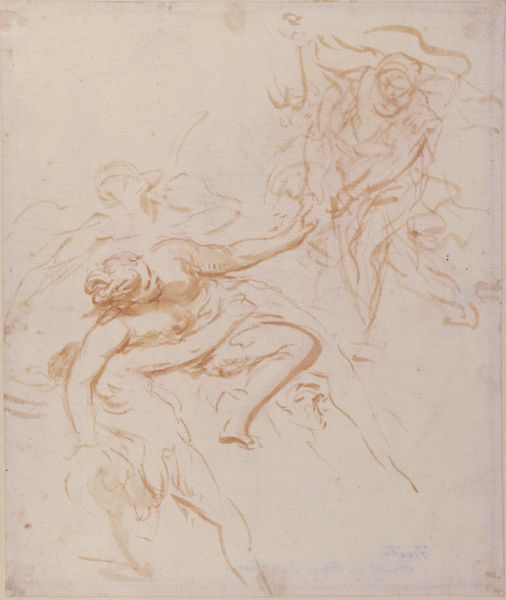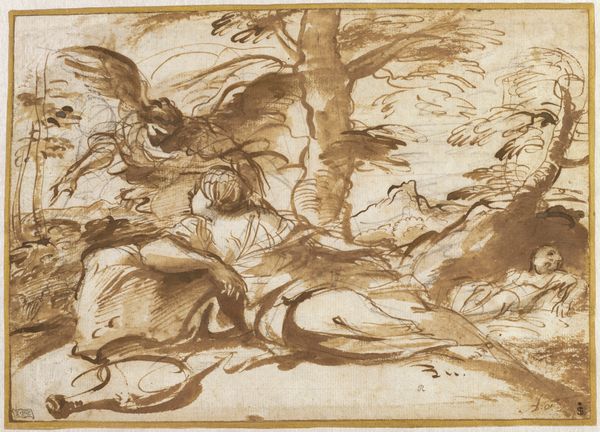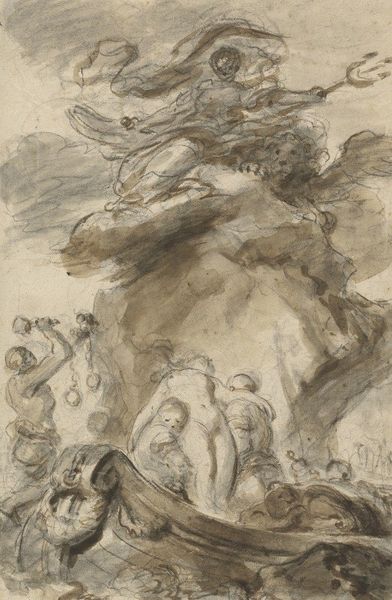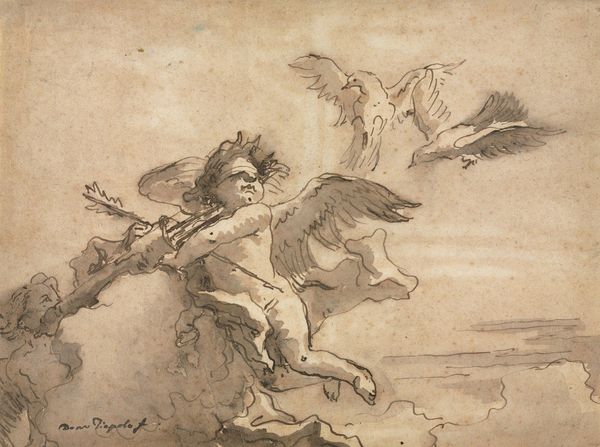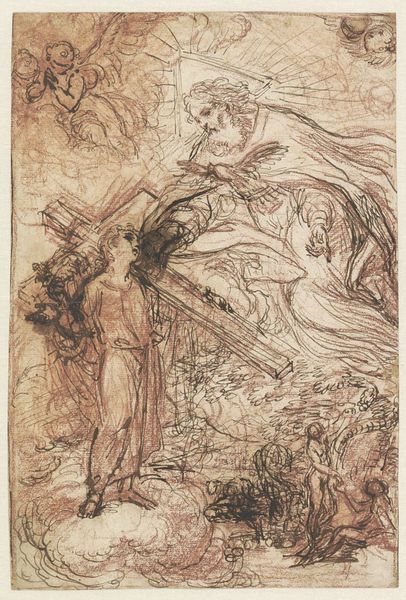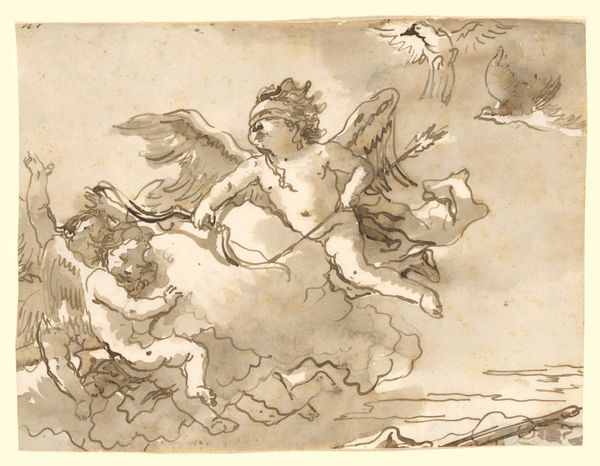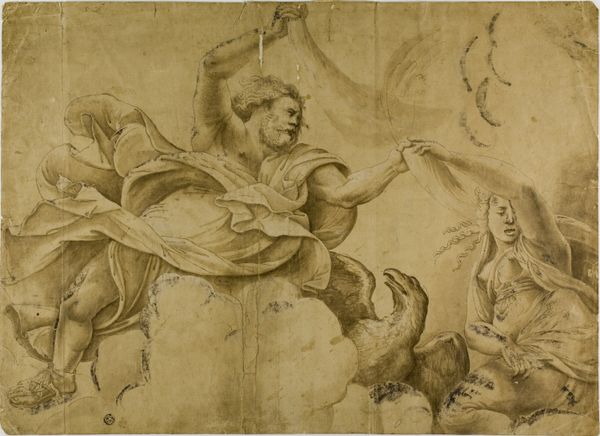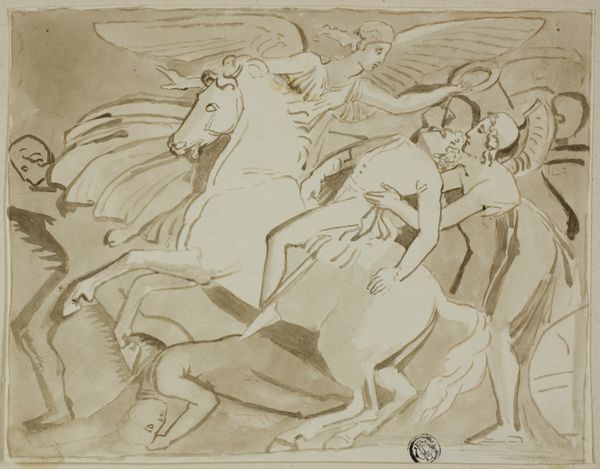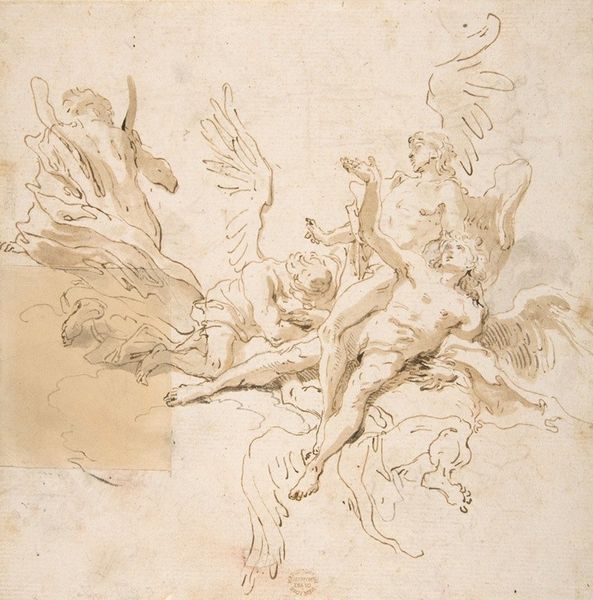
drawing, paper, ink, chalk
#
drawing
#
allegory
#
figuration
#
paper
#
11_renaissance
#
ink
#
chalk
#
history-painting
#
italian-renaissance
Dimensions: 154 × 189 mm
Copyright: Public Domain
Curator: Giorgio Vasari's "Study for Ceres," created around 1556, presents us with an intriguing drawing. It employs chalk and ink on paper. Editor: The first thing that strikes me is the dynamism captured in those quick lines! The energetic composition and somewhat rough rendering evoke a sense of powerful motion, as if the whole scene were caught mid-flight. Curator: Indeed, this sketch showcases Ceres, the Roman goddess of agriculture, fertility, and motherhood. We see her in her chariot. The very image embodies abundance, nurturance, and the cyclical renewal of life. Vasari often used allegorical figures like this to imbue his art with layers of meaning. Editor: Look at the texture of those fabulous hybrid creatures pulling the chariot. Vasari creates depth through those varied cross-hatching and bold contour lines. The line work gives so much dimensionality! I'd be interested to know what these animals suggest as signifiers, outside merely providing locomotion. Curator: Fantastic question! The inclusion of mythical beasts—the exact species of these, are up for debate; however, that is exactly the point—enhances Ceres's divine status, emphasizing her command over the natural realm. The imagery speaks to ancient myths and beliefs that connect her to both earthly fertility and celestial power. This symbol speaks directly to the hopes for abundant harvests and a prosperous society, speaking even louder to its audience who immediately could connect these images to common societal understanding. Editor: And that open gesture from Ceres herself seems intentional! A command perhaps? Even that specific chalky material amplifies the softness needed for the subject she commands. Curator: Precisely! Vasari's study isn't just about visual appeal; it's about communicating complex ideas through a sophisticated visual language, deeply rooted in Renaissance symbolism and cultural memory. It is meant to create emotion and awe. Editor: This has definitely shown me that every aspect, from material choice to compositional structure, can amplify symbolic meaning. What a delightful dive! Curator: Agreed! It's a valuable reminder that the Renaissance masters invested their artworks with multiple layers of symbolic meaning. It reminds us that great art is often underpinned by intellectual and emotional richness that extends far beyond superficial appearances.
Comments
No comments
Be the first to comment and join the conversation on the ultimate creative platform.


